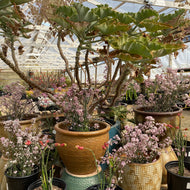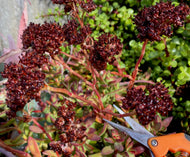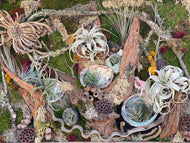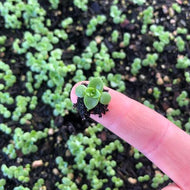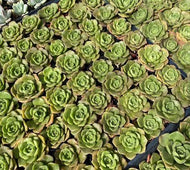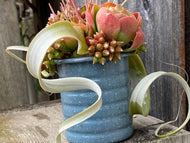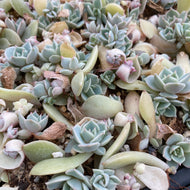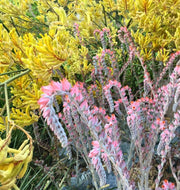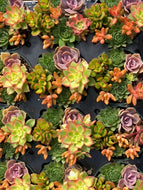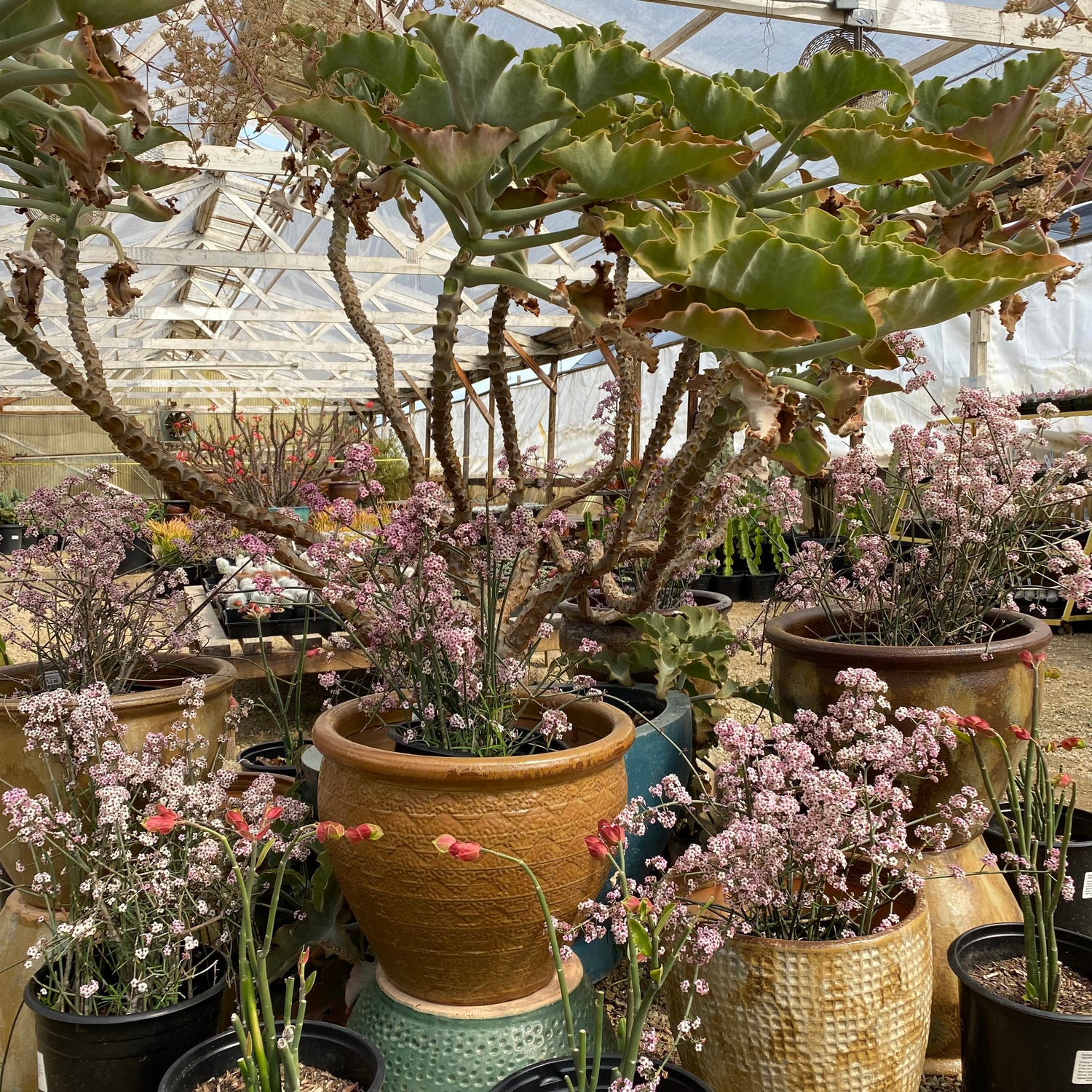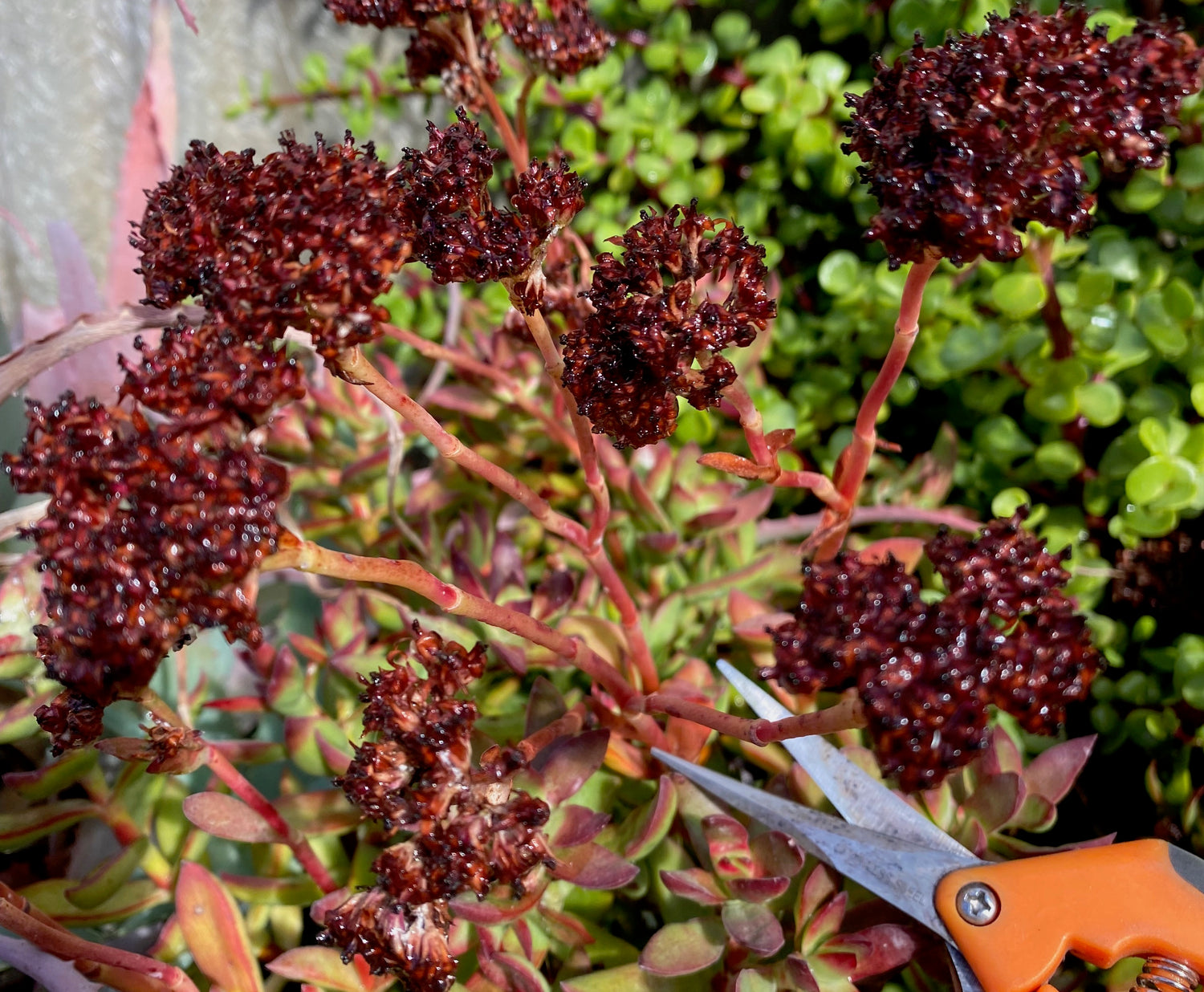HISTORY OF ECHEVERIA GIBBIFLORA HYBRIDS
Echeveria gibbiflora is the largest of all echeveria species, and one of the parent plants of the majority of the large, cabbage-head echeveria hybrids we’ve come to know so well. There are so many of these hybrids in cultivation today that it is difficult to properly identify them all or trace back their origins to their original hybridizers (many are likely incidental crosses). These hybrids vary greatly in size, color, shape, and form depending on their parentage. Echeveria gibbiflora is itself a highly variable species, making the possibilities for new hybrids endless.
The earliest known E. gibbiflora hybrid is the common garden plant Echeveria ‘Imbricata’, a cross of E. secunda, a low-growing blue species that offsets prolifically (hence its common name, “Hens and Chicks”). One of the most familiar succulents to gardeners, E. ‘Imbricata’ was hybridized by Frenchman M. Deleuil in the late 19th century. Because it became so common, nurseries often overlooked growing E. ‘Imbricata’, and there is currently a huge demand for this “retro” hybrid. Beloved by landscapers for its durability, E. ‘Imbricata’ is one of the more cold-hardy of the E. gibbiflora crosses.
Another early E. gibbiflora hybrid is the beautiful Echeveria ‘Perle von Nurnberg’, a hybrid of E. gibbiflora ‘Metallica’ (a particularly purple form of the species) and Echeveria elegans. Developed in Germany during the 1930s by collector R. Graessner, E. ‘Perle von Nurnberg’ is still regarded as one of the most beautiful of all echeveria hybrids and has become ubiquitous in the nursery trade, even finding its way into grocery stores and wedding bouquets. A bit more delicate than its cousin, E. ‘Imbricata’, E. ‘Perle von Nurnberg’ performs best in pots where it can be moved in case of frost or extreme heat.
Beginning around the middle of the 20th Century, growers, collectors, and horticulturalists began churning out a great many new E. gibbiflora hybrids. The results were dramatic and diverse: bumps, curls and every color imaginable, sometimes all on a single plant (Have a look at Echeveria ‘Mauna Loa’). Dick Wright, Frank Reinelt and Harry Butterfield were all California-based echeveria enthusiasts and instrumental in producing some of the most beautiful E. gibbiflora hybrids that we see today. Echeveria hybridizing continues in our modern times, and it’s unlikely to stop any time soon due to the beauty and diversity of the genus.
At Succulent Gardens, Echeveria gibbiflora hybrids are amongst our favorites at the nursery. A large section of one of our greenhouses hosts a collection of numerous crosses, some intentional, some incidental. The result is a beautiful rainbow of brilliant color that we never cease to enjoy. Our hybrid collection is not limited to E. gibbiflora crosses, however. We also have many E. gigantea and E. subrigida hybrids up in the mix as well.




